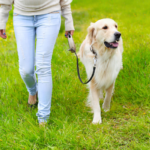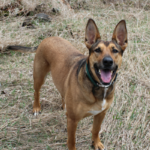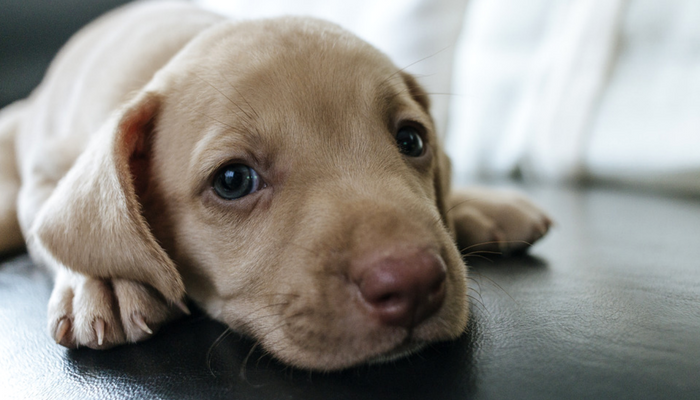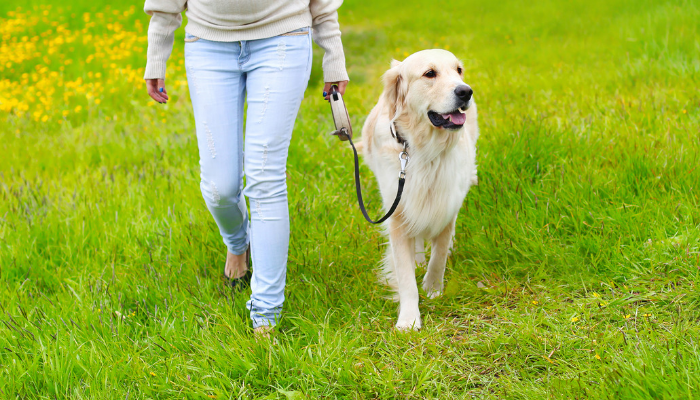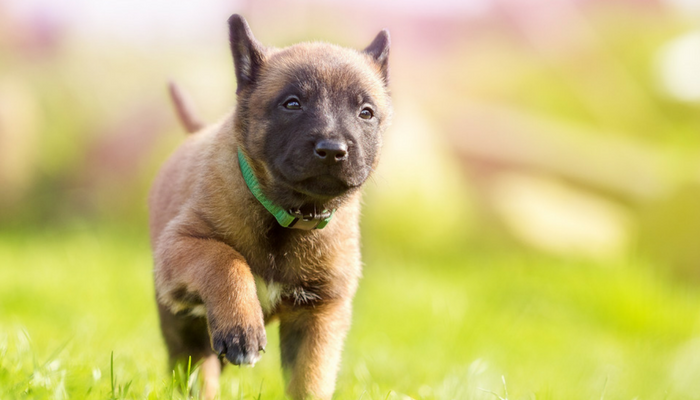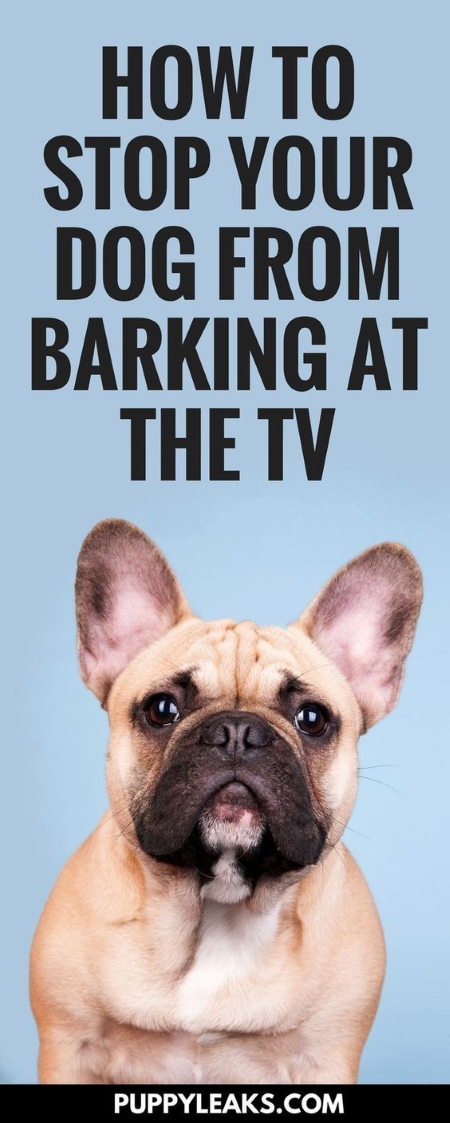[ad_1]
I’ve written about how to potty train your puppy before, but I haven’t spent much time addressing the common issues many of us face during the process. I’ve gotten a lot of questions regarding house training issues, many asking how to handle certain setbacks, so today I’ll address the most common questions and concerns. Here’s 5 common house training issues & how to fix them.
Your Dog Is Repeatedly Soiling the Same Area
One of the most frequent house training issue is when dogs keep going to the bathroom on the same spot. It’s frustrating, but chances are they’re doing it out of habit, and since they’ve already “marked” the area before they know it’s a good place to go.
Chances are your dog is picking up on those leftover urine smells, even if you think you’ve cleaned the area well. It’s estimated that a dog’s sense of smell is at least 10,000 times better than ours, and they can pick up on leftover smells that we don’t even notice.
Dogs have a tendency to prefer going to the bathroom in the same spot, and if there’s any urine scent left in your home they’re going to be attracted to that spot. So if you’re in the middle of house training those leftover smells indoors can override your dog’s desire to go to the bathroom outside.
If your dog smells urine in any particular spot inside they might not think twice before using that spot again. For dogs it’s completely normal to keep going in the same area over & over again. To avoid that setback you need to clean up any accidents your dog thoroughly. It’s imperative that you get rid of any smells in that area that your dog may be picking up on.
To get rid of urine smell in your carpet use an enzymatic cleaner made for cleaning up pet stains. The enzymes in those cleaners bond to specific molecules and break them down, making it easier to clean up messes and remove stains. The enzymes in pet specific cleaners break up chains of molecules that create the unpleasant odors found in pet urine. You can find enzymatic cleaners from amazon and most pet supply stores.
For even tougher cases you will want to consider keeping your dog separated from the areas they’re known to soil while they can’t be supervised. As mentioned above it’s also part habit, so if your dog has a certain rug they like to pee on chances it’s their favorite spot and won’t think twice about using it again.
The best way to prevent that is by either tethering your dog to you until they’re 100% potty trained, or by blocking off any rooms or areas when you’re not able to supervise them.
Your Dog Has Accidents While You’re At Work
Another one of the house training issues many of us face is our dog having accidents when you’re at work or out of the house for awhile. Generally speaking a pup can only hold their bladder for about one hour per every month of age. Your 3 month old puppy might only be able to hold their bladder for 3 hours, and that’s an issue for those of us who work full time. It’s not realistic to expect a 3 or 4 month old puppy to hold it for 8+ hours while you go to work.
A few dog owners are lucky enough to work for a company that allows them to bring their dogs to work with them, but that’s not an option for the majority of us. So how do you keep your dog from having an accident when you go to work? If you don’t have someone else at home to take your pup out during the day you have a few options:
- Have a friend, family member or neighbor take your dog out during the day.
- Come home during your lunch break to take your dog out (if you work close to home).
- Hire a dog sitter or dog walker to take your dog out while you’re at work.
- You can take your dog to doggie daycare (can be cost prohibitive).
Crate training is often brought up as a way to prevent your dog from having an accident while you’re at work. While I do think crate training has many benefits such as keeping your dog safe while you’re away I do want to emphasize that it’s not a fool proof method in terms of preventing accidents. It’s true that most dogs don’t want to soil in their crate if given the choice — but remember that most puppies can’t hold it for 8 hours straight, regardless of whether they’re in a crate or not.
I’m not suggesting that crate training is bad, I’m just emphasizing that it’s not the miracle tool for house training that some make it out to be. Dogs may be less likely to soil in their crate than they would if they have free roam of the house, but that only works for as long as they’re physically able to hold it in.
Your Dog Won’t Go to the Bathroom When You’re Outside
How many times has this happened to you? You take your dog out to go potty, only to see that they’re interested in everything but going to the bathroom. You’re certainly not alone, this happens to all of us. One of the most common house training issues is dealing with a dog that won’t go to the bathroom when they’re outside. It’s the reason why the meme below is so popular — it’s something we can all relate to.
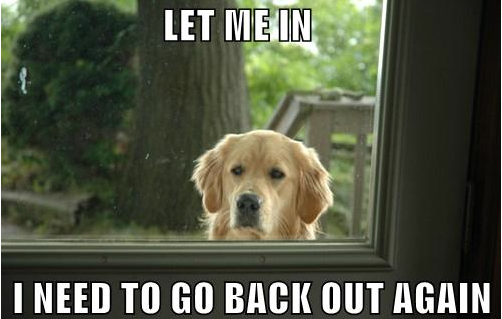
If you take your dog out and they’re not going potty it could be for a number of reasons. Some dogs ask to go out because they want to play, some dogs want to go out and explore, and sometimes it’s because we simply take them out when they don’t have to go.
As dogs get older their bladders grow and they can hold it longer, so as you progress along in your house training you’ll notice that your dog doesn’t have to go potty every hour or two like they used to. If you take your dog out every two hours and notice that they aren’t going potty each time chances are they don’t need to go out that often anymore. Instead of taking them out every 2 hours try 3.
If your dog asks to go out and they don’t go potty within 5 minutes or so chances are they wanted to go out for something other than a bathroom break. Perhaps they want to play, or maybe they want to go out and track that interesting smell they noticed earlier. I’m not usually one for denying play and exploration, but if you’re still in the middle of house training I’d suggest taking them back inside if they’re not going to go potty, rather than indulging them.
The reason being is that when you’re potty training you’re ultimately waiting for the time when your dog can reliably ask to go outside when they need to go potty. If they ask to go outside for other reasons and you encourage them by playing along they’re more likely to ask to go outside to play again. Again, it’s a personal choice as to whether or not you want to indulge them in some outdoor play. For me I like to try to keep potty training simple and avoid the confusion of “is she asking to go out to go potty, or does she just want to play?”
I’m not a complete grinch, and I’m not encouraging you to be one either. If your dog is asking to go outside and they only seem interested in play what I suggest is taking them back inside and playing indoors. As they get older and get closer to being completely house broken that rule can change. But for the first month or so of potty training I suggest trying to make the outdoors all about potty breaks as much as possible.
Try to avoid turning “do you gotta go outside” into more than just potty time. If you do want to play with your pup outdoors do so when you choose to go out with them, rather than when they ask to go out.
Your Dog Doesn’t Let You Know When He Has to Go Out
One of the biggest house training issues is teaching your dog to let you know they have to go out. There’s a misconception that dogs will quickly figure out how to let you know when they have to go, unfortunately most dogs don’t pick up a cue like scratching on the door right away when they need to go out. One of the most common house training issues is finding a reliable way for your dog to let you know that they’ve got to go out.
If you feel like your puppy isn’t letting you know when they have to go out you’re not alone. A lot of dogs circle and sniff around when they need to go out, but those subtle cues aren’t always picked up on by us. To avoid missing those signs your dog uses when they need to go out you can work on teaching them to use a specific cue.
Teaching your dog to use a specific cue when they need to go out such as barking at the door or using a bell will ensure that your dog has a way to reliably get your attention when they need to go outside.
Choose which method you’d like your dog to use when letting you know that they have to go out and stick with it. Stand by your dog and encourage them to use that signal before you go outside with them, and praise them like crazy when they use it. With enough repetition your dog will start to associate that signal with going outside, and after enough practice they’ll start using it on their own to let you know when they’ve got to go.
If Your Older Dog is Urinating Inside The House
If your older dog has suddenly started going to the bathroom inside your house it may be urine marking, or it may be the sign of an underlying medical issue. Same goes for younger dogs; certain medical issues like UTI’s can cause dogs to urinate frequently.
Urine marking, sometimes called marking their territory, occurs when your dog purposely marks certain areas with his urine. Our dogs commonly mark things while we’re out on walks (peeing in certain areas), but this behavior can also happen at home. Some dogs may mark new items in the house (a new piece of furniture), and some dogs may start marking when a new animal is introduced into the home.
Has there been a big change in the house lately? Is there a new animal or baby at home? Is your dog on a new schedule? Did you move to a new house? Is your dog being left alone for longer than usual? All of these changes can cause stress, leading to indoor urination.
The good news is older dogs usually respond well to a quick refresher course on potty training. Don’t punish your dog for accidents. Clean up any area that they’ve soiled well, and get back into the habit of praising them for going potty outdoors for a little while.
If your dog is repeatedly urinating on a certain piece of furniture you can block that area off with a baby gate. Does your dog seem anxious when you leave for work and have they started peeing inside the house? If so start working on steps to decrease separation anxiety.
If you haven’t had any big changes at home that you can attribute to your dog’s indoor urination it’s time to take a trip to the vet. For older dogs who’ve already been potty trained urinating or defecating inside the home may indicate a medical issue. Some of the most common medical issues that can lead to your dog urinating in the house include:
- Urinary tract infections
- Bladder stones
- Kidney disease
- Diabetes
- Liver disease
- Cushing’s syndrome
If your house broken dog has suddenly started going to the bathroom inside your home consult your veterinarian.
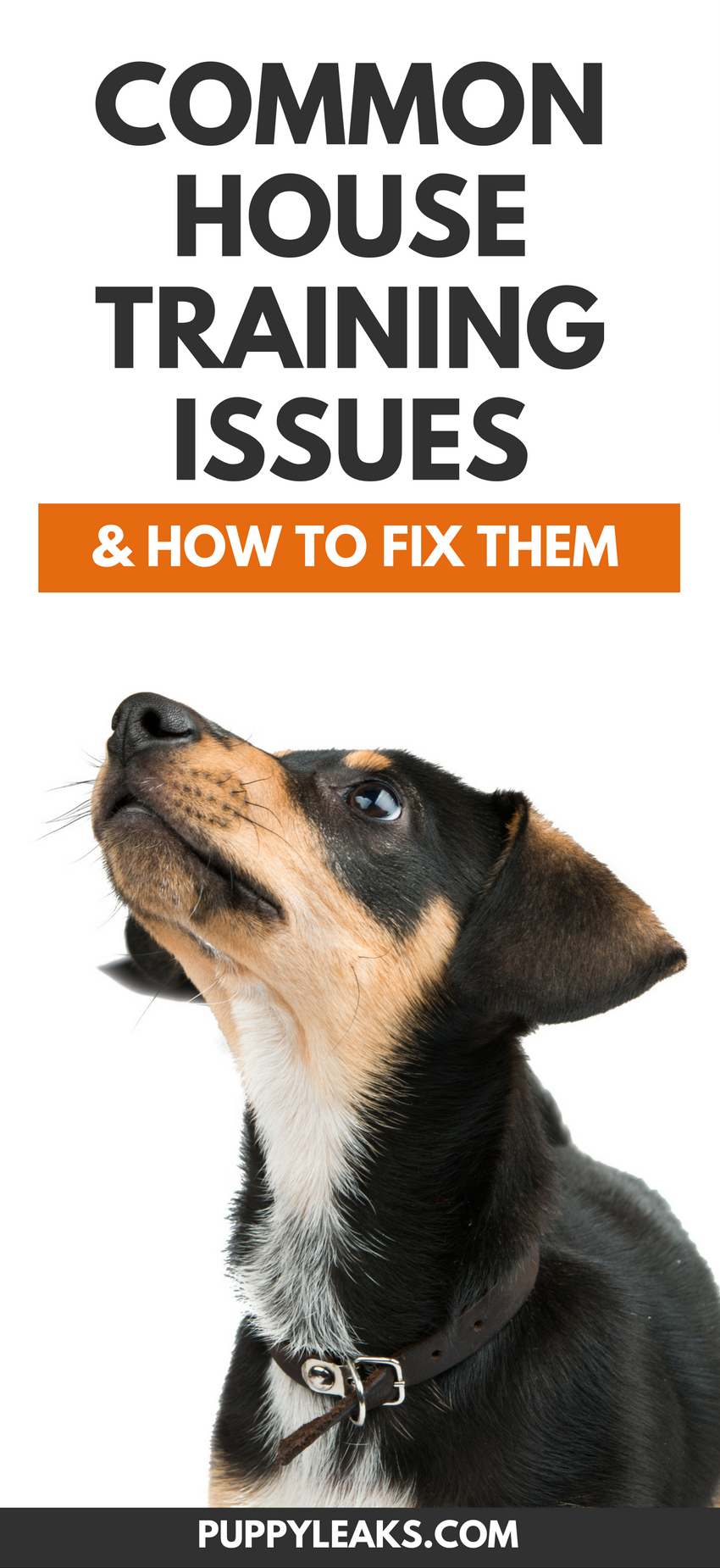
Please share with your friends 🙂
This post contains affiliate links. If you make a purchase I’ll earn a commission. For more information please see our disclosure page.
[ad_2]
Source link


